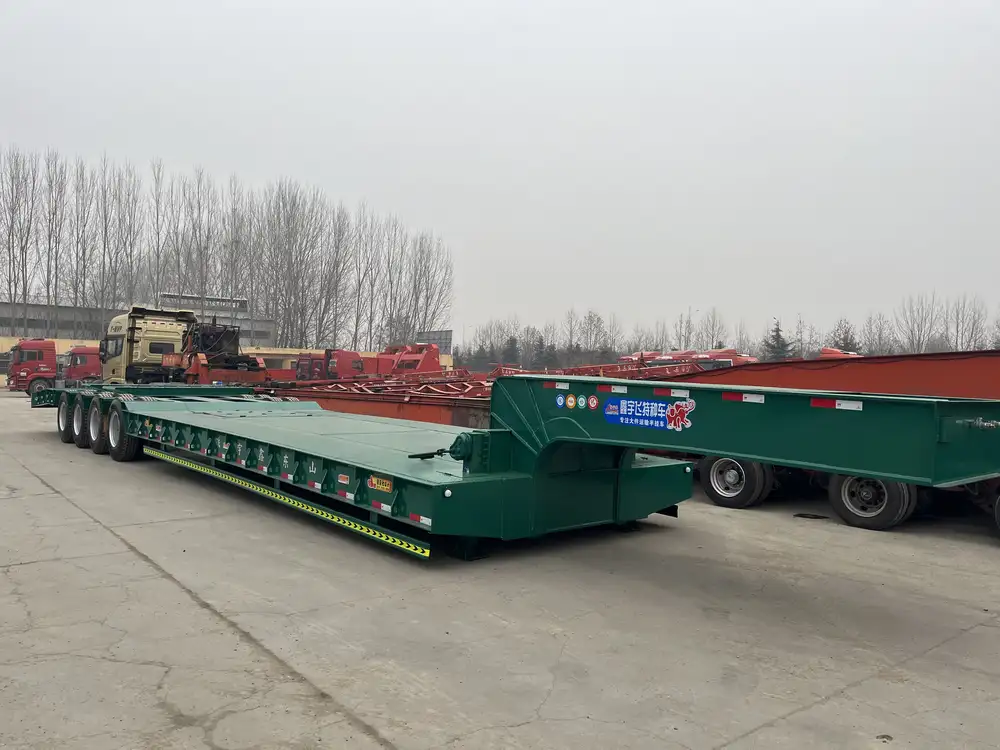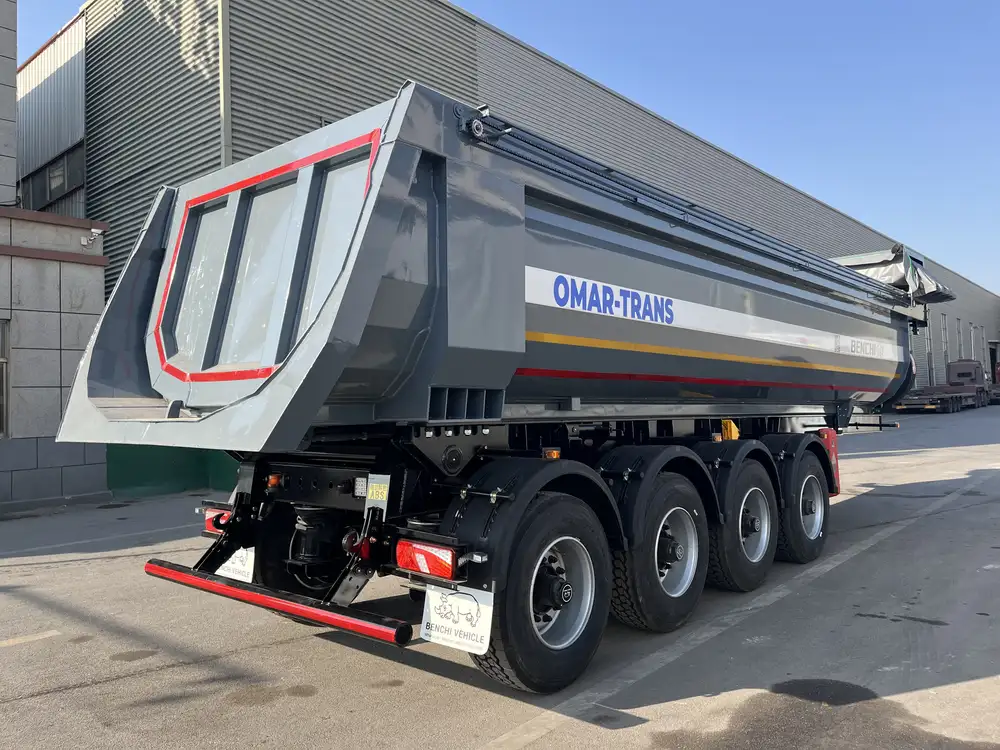When it comes to the logistics domain, the semi-trailer tandems play a pivotal role in ensuring the safe and efficient transport of goods. A fundamental yet often overlooked aspect of semi-trailer operations is understanding how weight shifts in tandem axle configurations can impact both load distribution and towing vehicle performance. This guide aims to dissect the factors influencing weight distribution across tandem axles, explore industry standards, and provide practical insights to optimize performance.
What Are Tandem Axles?
Tandem axles consist of two axles that are positioned closely, typically within a four-foot distance or less. This design enhances the vehicle’s load-bearing capacity, stability, and maneuverability. Semi-trailers equipped with tandem axles can carry heavier loads while maintaining critical balance, which is essential for road safety and efficiency.
Key Features of Tandem Axles:
- Load Distribution: Effective weight distribution promotes tire longevity and reduces wear on suspension components.
- Increased Capacity: Tandem axles allow for a higher Gross Vehicle Weight Rating (GVWR).
- Stability: Provides better stability during turns, especially with heavier loads.

The Dynamics of Weight Shifting: How It Works
Understanding the physics behind weight distribution is essential. When loads are added or shifted within a semi-trailer, the changes in weight are not uniformly distributed across all axles. The weight each hole in a tandem shifts can significantly alter the dynamics of the vehicle, influencing handling, braking, and tire wear.
Factors Influencing Weight Distribution:
- Load Configuration: The positioning of cargo blocks within the trailer can result in uneven load distribution.
- Environmental Factors: Terrain variations can lead to weight displacement across axles.
- Suspension Type: The design of the trailer’s suspension system can significantly affect how weight is distributed across tandem axles.
Example Table: Impact of Load Positioning
| Load Position | Weight on Axle 1 (lbs) | Weight on Axle 2 (lbs) | Total Weight (lbs) |
|---|---|---|---|
| Front Heavy | 12,500 | 10,000 | 22,500 |
| Rear Heavy | 10,000 | 13,500 | 23,500 |
| Balanced Load | 11,500 | 11,500 | 23,000 |

How Much Weight Does Each Hole Shift?
In the context of a semi-trailer, the phrase “each hole on semi-trailer tandems” can refer to the various points at which weight is applied, typically represented by the slot positions on a sliding tandem axle system. Each hole allows for adjustment in axle configuration, which can lead to notable weight shifts. Depending on the cargo distribution and how the trailer is loaded, every adjustment can lead to weight shifts in excess of 500 pounds per hole.
Practical Example of Weight Shift:
- If a load exceeds the recommended axle weight: This could lead to significant weight migration towards the rear, affecting tire wear and potentially causing mechanical failures over time.
Consequences of Improper Weight Distribution
Understanding the implications of improper weight distribution is vital for manufacturers, fleet owners, and operators. A few important aspects include:
- Increased Tire Wear: Disproportionate weight on a single axle can lead to accelerated tire degradation.
- Poor Handling: An unbalanced load can compromise vehicle control, increasing risks during operation.
- Legal Ramifications: Exceeding weight limits can result in hefty fines and compliance issues.

Signs of Improper Weight Distribution
- Visible tire wear patterns (excessive outer edge wear)
- Uneven braking performance
- Unusual trailer sway during transit
Best Practices for Load Distribution
To ensure optimal performance and compliance with industry standards, consider implementing the following best practices:
1. Regular Weight Check
Utilize certified scales to weigh the loaded trailer before departure. This will help identify any potential weight discrepancies across tandem axles.

2. Load Placement
Place heavier cargo items closest to the trailer axles while distributing lighter items towards the front or rear, depending on the weight distribution requirement.
3. Use Load Bars
Load bars can help maintain consistent weight distribution throughout transit. They prevent shifting and help secure the load to minimize movement.
4. Consult Manufacturers’ Guidelines
Always refer to the manufacturer’s specifications for your trailer model regarding load limits and weight distribution recommendations.

Advanced Weight Distribution Techniques
For those looking to optimize their semi-trailer performance further, consider adopting advanced techniques such as:
Smart Suspension Systems
Modern trailers equipped with smart suspensions can automatically adjust to maintain optimal weight distribution based on load and road conditions.
Weight Sensors
Integrating weight sensors with your tandem axles can provide real-time data on load distribution, enabling drivers to make immediate adjustments as needed.

Regular Maintenance
Regularly inspect suspension components and axles to ensure they are functioning correctly and replace any worn parts to maintain load stability.
Conclusion
Understanding the dynamics of weight distribution within semi-trailer tandems, including how much weight each hole reflects, is paramount for operators aiming for efficiency and safety in transportation. By implementing strategies for optimal load positioning and adhering to best practices in monitoring and maintenance, operators can significantly enhance the performance and lifespan of their equipment.
Additional Resources
- Weight Distribution Guidelines by the Department of Transportation
- Tire Pressure Monitoring Systems for Trailers
- Webinar on Trailer Weight Management Techniques
Maintaining awareness of these factors will not only facilitate successful operations but will also promote compliance with safety regulations, enhancing the overall performance of your fleet. Adjustments in weight configuration can lead to substantial benefits, offering operators greater control over their freight and the associated operational costs.



